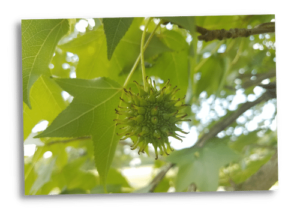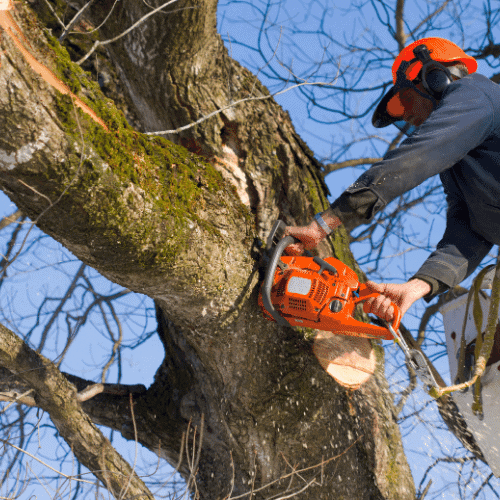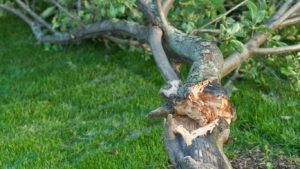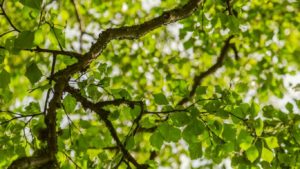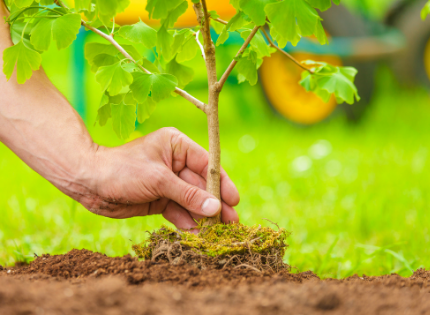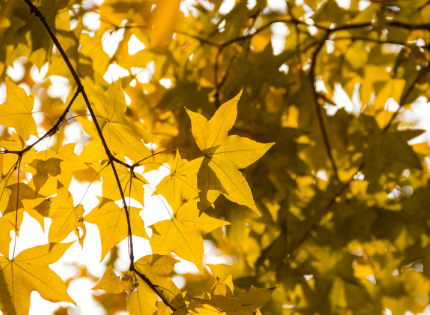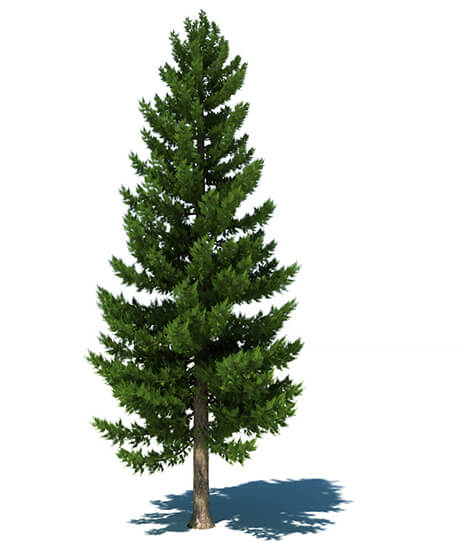But, no. Actually, millions of people around the world are birdwatchers, accounting for as many as three million international trips each year as part of the recreation called ‘ecotourism.’ Special clubs and societies exist in many countries.

But what about the U.S.? Is birding popular with Americans, too?
Well, nearly one in five Americans—over 50 million— consider themselves ‘birders.’ That’s more than the total number of Americans that play basketball, baseball, and football combined.
So, what about you? Are you interested? Do you want to get your entire family started on this very popular family activity?
Let’s see how you can get your family involved.

Contents (Click To Jump)
- 1 GETTING KIDS STARTED
- 2 KEEPING TEENS INTERESTED
- 3 PULLING ADULTS OUT INTO NATURE
- 4 BIRDING IS FOR SENIORS, TOO
- 5 THE GEAR YOU NEED
- 6 CHOOSING THE RIGHT BINOCULARS
- 7 A FIELD GUIDE OR SMARTPHONE APP?
- 8 RECORDING WHAT YOU’VE SEEN
- 9 LET’S START IDENTIFYING
- 10 BIRD IDENTIFICATION IN 12 STEPS
- 11 BIRDING SOLO OR WITH A GROUP?
- 12 RULES OF THE ROAD: BIRDING ETHICS
- 13 SO, WHAT MAKES A GOOD BIRDER?
GETTING KIDS STARTED
Children have a natural interest in all kinds of animals, especially in their natural habitats. With birds, it’s no different.

To pique their curiosity, find a book, app or video that shows only the top five or ten birds in your region. Help your child identify them so that when you all go outside looking for birds, they will have instant success in identifying what they see.

You won’t even have to travel very far. If you have bird-friendly landscaping and bird attractors like bird feeders, a water source, or nesting boxes, the yard can be a magical place to start. If you recently had trees trimmed back or if you had to completely remove a dead tree, then you may be better off starting at a local park or nature path.

Be sure to get kids their own binoculars; an adult’s hand-me-downs can be too big and too heavy. And help your kids make a list of what they have seen, so they can watch it grow.

KEEPING TEENS INTERESTED
Gamification is great for teens, as a way to get them past saying that an activity is ‘boring.’ Find some competition with rewards for the total number of birds, types of birds, or whatever it takes to get teens over the fact that birding may not seem cool enough, and that they’d rather be hunched over their phone or a video game at home.

SIDENOTE:
Software available at eBird.com lets you keep tabs of what you’ve seen and helps turn birding into a game.

If your teen is afraid his buddies will make snarky comments, add wildlife photography to the mix. The harder it is to capture the photo of a particular bird, the greater the bragging rights.

Granted, this can add to the cost of gearing up for birding, but once you’re sure your teen is hooked, it could be an excellent investment in staying outside, interacting with a different crowd (birding enthusiasts come in all ages and from all walks of life) and away from 24/7 video games.
Besides, costs for high-megapixel, image-stabilized, zoom cameras have come way down.

PULLING ADULTS OUT INTO NATURE
It can be hard to break adults from their well-established routines and try something new.

Unless we’re already fans, some activities create knee-jerk resistance and birding can be one of those activities.
However, it can also be surprising the satisfaction that learning something new, stretching our identification skills, and getting a face full of sunlight and breeze can bring.

BIRDING IS FOR SENIORS, TOO
Some have images of the over-60 crowd climbing onto big air-conditioned buses and being driven into wooded areas, then climbing off with binoculars around their necks and pocket guides.

Much more likely today, though, are the athletic Boomers who have just scaled a sheer cliff to watch a bald eagle care for her new hatchlings.
They are witnessing something few in the world get to see.
Even those who keep their feet on solid ground will find that birding keeps them active, engaged and healthy.

As seniors age, time may take its toll on knees, hips, and backs. But birding is one activity they will not have to give up. It does not require challenging exercise.
It can even be done at a kitchen window, with a cup of coffee in hand, if you put bird feeders in strategic places in the backyard.

SIDENOTE:
No matter what your age—and even if your hearing is perfect —a hearing amplifier can help capture bird calls from far away.

THE GEAR YOU NEED
START WITH THE BASICS
FOR STARTERS, GEAR UP FOR BIRDING CALLS WITH:
 a pair of binoculars
a pair of binoculars a paper or digital field guide
a paper or digital field guide a birding app for your smartphone or another device
a birding app for your smartphone or another device a weather-proof notebook
a weather-proof notebook

CHOOSING THE RIGHT BINOCULARS
SIDENOTE:
The binocular (also called ‘bins’ by birders) is a hand-held, double-barreled telescope that should fit your hands, eyes, face, size, and birding style.

Binoculars can be the make-or-break element of your birding experience.
They can cost from under $200 to $2,000+. The quality you buy will depend greatly on what you can afford, and how seriously you think you will pursue your birding activities.

HOW TO BUY BINOCULARS
Once you have defined your budget, search online for websites linked to birdwatching magazines or experts such as the Audubon Society.
Read the reviews of the different binoculars they recommend.

HOW NOT TO BUY BINOCULARS
An alternative is to search for “best binoculars for birdwatching” and come up with product review sites that rank products by how much commission they will make if you click through their link.
That’s not how you want to start your birding experience! You want a knowledgeable reviewer whose expertise is in birding. (Not even a hunting or boating expert; their requirements are different.)
Buying binoculars that are up to the specific task of birding gives you every chance to love this new activity. Buying junk binoculars – even if acceptable for other uses – takes away that chance.
HERE ARE A FEW KEY STARTING POINTS YOU’LL WANT TO KNOW, SO YOU’RE SURE YOU’RE GETTING A CRISP, BRIGHT VIEW OF THAT BIRD.

NUMBERS
Binoculars are described by a set of two numbers: the magnification (or how many times the object is being enlarged through the eyepiece) and the aperture (or the diameter of the lens at the fat end of the binocular).

For birding, the magnification should be between 6 and 8.5. The lens diameter should be between 30 and 42.
Below 30 you won’t get enough brightness to see in less-than-ideal light, and above 42 your binoculars may be too heavy. The low-end combination might be 6×32 and the high-end, 8×42.

PORRO VERSUS ROOF
The prisms inside the binoculars that manipulate the image can be ‘porro’ (angled) or ‘roof’ (direct line).
Porro prisms are cheaper, can be bulky, and harder to weatherproof, but they do focus quickly. Roof prisms are costlier but lighter, more rugged, and trouble-free.
MORE DEETS
An expert can help you navigate these details.
 Focus must be fast enough to ‘lock in’ on a fast-flying bird.
Focus must be fast enough to ‘lock in’ on a fast-flying bird. Field of view must be wide enough to find birds quickly and follow their movement.
Field of view must be wide enough to find birds quickly and follow their movement. Color rendition needs to be accurate, and the center of the field should be distortion-free.
Color rendition needs to be accurate, and the center of the field should be distortion-free. Weight and shape matter: binoculars should feel comfortable in your hands.
Weight and shape matter: binoculars should feel comfortable in your hands. Staying fog-free matters, too, no matter how humid or wet the environment.
Staying fog-free matters, too, no matter how humid or wet the environment. Lastly, you want them to work with or without your eyeglasses.
Lastly, you want them to work with or without your eyeglasses.
SIDENOTE:
Do you wear eyeglasses? If so, you will probably want to go to a store where you can try out binoculars before buying them. That’s because the distance from your eyeball to the eyepiece of the binoculars is important.
You see, with glasses, your eyeballs will be further away, and you may not be able to see the full field of view. (Some binoculars are designed to compensate for this.)

HEARTBREAK FACTOR
Don’t buy break-the-bank binoculars that mean you have nothing left to pay for exciting travel or other accessories, such as a spotting scope to find distant birds.
You want to buy the best you can afford, but still be able to replace them if they get lost or stolen.

Also be sure you have a waterproof housing, a lifetime warranty from the manufacturer and an excellent return policy from the seller, especially if online.

A FIELD GUIDE OR SMARTPHONE APP?
The classic printed field guides include “Peterson Field Guide to Birds of North America” by Roger Tory Peterson; “The Sibley Guide to Birds” by David Allen Sibley; and “Kaufman Field Guide to Birds of North America” by Kenn Kaufman.

For anyone still into paper guide books, but who wants something pocket-sized, anything by those authors or by associations such as the Audubon Society or National Geographic would be excellent.
But for anyone who would prefer to put technology —and their smartphone or tablet—to work, the world of birding apps is growing every day.

FIELD GUIDE APPS
Two available apps are digital versions of the famous paper field guides, with extra features that take advantage of technology. (Remember Peterson, Sibley and Kaufman? Kaufman is still ‘paper only.’)

PETERSON BIRDS OF NORTH AMERICA
24-hour free trial, then $9.99+. Available for iPhone and via Google. It uses field guide paintings to help compare, identify, record, and share birds you’ve seen.

THE SIBLEY EGUIDE TO BIRDS
Lite version for free on iTunes to test, then $19.99 to upgrade. Available for Apple, Android, Kindle, and computer. It is enhanced way beyond its paper field guide, but still uses drawings, not photos.

ACTIVE IDENTIFICATION APPS
These apps can use your observations, photos, and audio recordings to help you identify an unknown bird. These apps are technology at its best and give even the least-experienced birder the joy of identifying that bird.

THE AUDUBON BIRD GUIDE APP
Free, and available for Apple, Android, and computer. Has two million downloads and uses photos to help identify and track the birds you’ve seen.

IBIRD GUIDES TO BIRDS
Full range from Lite to Ultimate, from free to $39.99, available for Apple, Android, Kindle, and computer. It can help identify birds by color, shape, location, habitat, song, or any of 34 other attributes.

MERLIN BIRD ID BY CORNELL LAB OF ORNITHOLOGY
Free, and great for the novice birder. Identifies bird possibilities within 400 species with five easy questions or a photo, based on where you are. It lets you practice listening to bird sounds.

EBIRD MOBILE
Also from Cornell, all your lists, stats, photos, and sounds are in your pocket. Allows sharing with a citizen science global online database. For Apple and Android, all for free.

EYELOVEBIRDS CHECKLIST
Apple only, from free to $4.99, known for its ease of use. Uses location-based lists for simpler bird ID, profiles, list-making, and tracking your lifetime list.

RECORDING WHAT YOU’VE SEEN

Whether you are someone who wants to keep a ‘life list’ of every bird you’ve seen, or just want notes to do more research when you get home, you’ll want some kind of notebook to record your observations as notes or drawings. A waterproof journal is best.

Taking photographs of birds – which will require an investment in the right camera – is another way to capture what you’ve seen for later study or appreciation.
You may also want to record their call or song with your phone or recording device.

LET’S START IDENTIFYING
Without years of experience, you won’t be able to be dropped off just anywhere and identify all the birds you see. Even experts specialize in regions or bird families. But with time, you’ll start building your knowledge inventory.
The first step in bird identification is learning to observe: you’ll watch and listen. But where do you start?

BIRD IDENTIFICATION IN 12 STEPS
As part of the Peterson Series, two long-time birding experts have defined birding in 12 steps with the “Peterson Guide to Bird Identification — In 12 Steps.”
LEARNING TO TAKE THESE 12 STEPS IN THIS ORDER WILL MAKE YOU AN EXPERT BIRD IDENTIFIER. BRIEFLY, THE 12 STEPS COVER:
 Taxonomy, or how are birds named and organized?
Taxonomy, or how are birds named and organized? Location, or what birds are available in your specific location?
Location, or what birds are available in your specific location? Habitat, or what birds could be found in what types of habitat?
Habitat, or what birds could be found in what types of habitat? Season, or how do different seasons affect what birds you’ll find? (And at what stages of maturity?)
Season, or how do different seasons affect what birds you’ll find? (And at what stages of maturity?) Lighting, or how does more or less light determine how much detail you can see?
Lighting, or how does more or less light determine how much detail you can see? Distance, or how does distance affect what you’ll be able to see?
Distance, or how does distance affect what you’ll be able to see? Behavior, or what is the bird doing and how does it sound?
Behavior, or what is the bird doing and how does it sound? Sound, or are you able to identify birds by their bird calls?
Sound, or are you able to identify birds by their bird calls? Structure, or can you identify birds simply by their shapes?
Structure, or can you identify birds simply by their shapes? Plumage, or how well do you know the colors and patterns of feathers?
Plumage, or how well do you know the colors and patterns of feathers? Variation, or how do gender and age affect how the birds look?
Variation, or how do gender and age affect how the birds look? Notes, or are you good at written descriptions and drawings of birds you see?
Notes, or are you good at written descriptions and drawings of birds you see?

As for ‘Structure,’ you’ll focus on:
- Size
- The shape and size of the bill
- Length of the tail, legs, and neck
- Other field marks.

Start by examining those elements on the birds in your backyard and you will understand what to look for in the future when you are observing all other birds.

Peterson’s list is daunting for a new birder. So, while you’re learning, be sure to use one of the Active Identification Apps you can download into your smartphone.
With an app, you can enter what you observe and get a short list of what bird you might be looking at – and that’s satisfying!

BIRDING SOLO OR WITH A GROUP?

We all have different personalities and different ways we take on new things. Some of us are lone wolves, more interested in researching and reading on our own.
Maybe we start in the neighborhood and nearby nature zones and eventually fly off across the country on a solo trek to follow a particular type of bird.

Others of us like to do things in groups. We’re more likely to find a group and tag along until we get the hang of the activity. An online search for “birding club + [your city]” may be all you need to get started.

RULES OF THE ROAD: BIRDING ETHICS

Birding is more than just a hobby. It’s a multi-billion dollar business worldwide when you consider all the gear, travel and accommodations, employment and taxes, plus other direct and indirect monies involved.

As a result, the American Birding Association has a set of guidelines to avoid – or minimize — harming birds in any way due to birdwatching. In short, birders should leave no trace behind as evidence that they were present in bird habitats.

SO, WHAT MAKES A GOOD BIRDER?
“A good birder is somebody who enjoys birding.” Nothing more, nothing less. ~
– Kenn Kaufman
Not everyone wants to become a professional birder.
Most of us just want to get outside and explore nature, whether alone or with our families. And to be able to answer, “What kind of bird is that?”

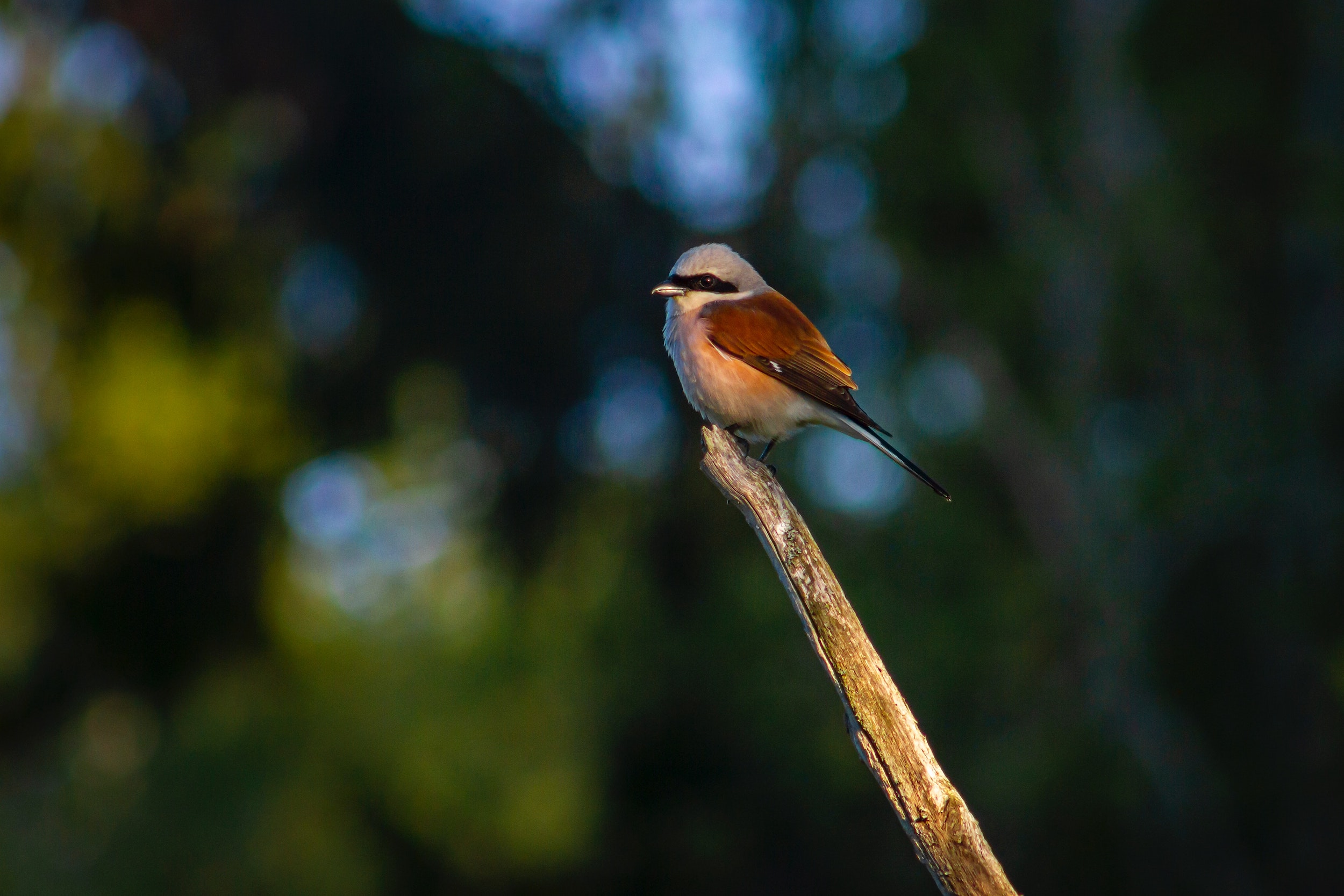
 a pair of binoculars
a pair of binoculars a paper or digital field guide
a paper or digital field guide a birding app for your smartphone or another device
a birding app for your smartphone or another device a weather-proof notebook
a weather-proof notebook Focus must be fast enough to ‘lock in’ on a fast-flying bird.
Focus must be fast enough to ‘lock in’ on a fast-flying bird. Field of view must be wide enough to find birds quickly and follow their movement.
Field of view must be wide enough to find birds quickly and follow their movement. Color rendition needs to be accurate, and the center of the field should be distortion-free.
Color rendition needs to be accurate, and the center of the field should be distortion-free. Weight and shape matter: binoculars should feel comfortable in your hands.
Weight and shape matter: binoculars should feel comfortable in your hands. Staying fog-free matters, too, no matter how humid or wet the environment.
Staying fog-free matters, too, no matter how humid or wet the environment. Lastly, you want them to work with or without your eyeglasses.
Lastly, you want them to work with or without your eyeglasses. Taxonomy, or how are birds named and organized?
Taxonomy, or how are birds named and organized? Location, or what birds are available in your specific location?
Location, or what birds are available in your specific location? Habitat, or what birds could be found in what types of habitat?
Habitat, or what birds could be found in what types of habitat? Season, or how do different seasons affect what birds you’ll find? (And at what stages of maturity?)
Season, or how do different seasons affect what birds you’ll find? (And at what stages of maturity?) Lighting, or how does more or less light determine how much detail you can see?
Lighting, or how does more or less light determine how much detail you can see? Distance, or how does distance affect what you’ll be able to see?
Distance, or how does distance affect what you’ll be able to see? Behavior, or what is the bird doing and how does it sound?
Behavior, or what is the bird doing and how does it sound? Sound, or are you able to identify birds by their bird calls?
Sound, or are you able to identify birds by their bird calls? Structure, or can you identify birds simply by their shapes?
Structure, or can you identify birds simply by their shapes? Plumage, or how well do you know the colors and patterns of feathers?
Plumage, or how well do you know the colors and patterns of feathers? Variation, or how do gender and age affect how the birds look?
Variation, or how do gender and age affect how the birds look? Notes, or are you good at written descriptions and drawings of birds you see?
Notes, or are you good at written descriptions and drawings of birds you see?